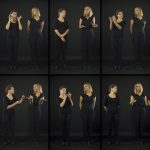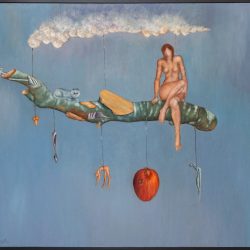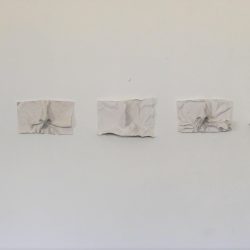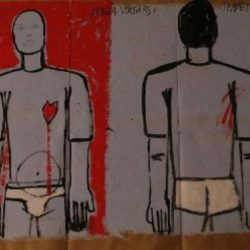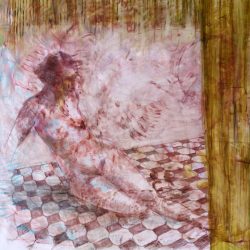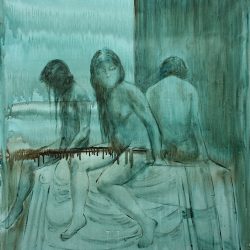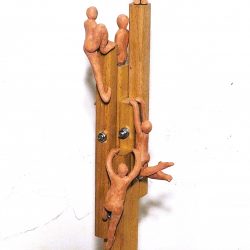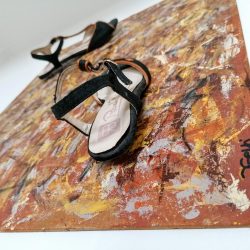work
in fondo lo sapeva
| category | Video |
| subject | Human figure |
| tags | spazio barriera Torino, fondazione CRT per l'arte contemporanea, residenze Resò, Resò Meet up , Galleria Marelia Bergamo |
| minutes | 6 |
| seconds | 11 |
| year | 2016 |
video installation, HD - 16:9, 6’11’’
In this video installation the artist plays out a reading performed by two people using a different language than the one they usually employ in their everyday com- munication. The chosen passage is selected from Storie della Preistoria (Stories of the Stone Age) by Alberto Moravia, a collection of 21 short stories about humani- sed animals living in a hypothetical Stone Age. The text is divided into different parts, some of which are read by the artist in the Italian Sign Language (LIS), the others read aloud by a deaf person. Each performer is tackling the expressive mode of the other for the first time. The reading is organised in a way that allows each of the figures to stay silent and listen while the other is “reading”. Being the only way of transmission of some parts of the text, the sign language is not efficient as a translation of the text for deaf people but addresses to the whole audience. Expression issues faced by both the performers face themselves into the understanding issues of the audience, whether deaf or not, caused by the absence of recognisable noise or gesture references. The intelligibility of the original text is thus sacrificed to let emerge, beyond specific differences, the universality of every language.
https://mega.nz/folder/jht0ELBZ#ELiY913gVzXffEB-EnkVFQ
In this video installation the artist plays out a reading performed by two people using a different language than the one they usually employ in their everyday com- munication. The chosen passage is selected from Storie della Preistoria (Stories of the Stone Age) by Alberto Moravia, a collection of 21 short stories about humani- sed animals living in a hypothetical Stone Age. The text is divided into different parts, some of which are read by the artist in the Italian Sign Language (LIS), the others read aloud by a deaf person. Each performer is tackling the expressive mode of the other for the first time. The reading is organised in a way that allows each of the figures to stay silent and listen while the other is “reading”. Being the only way of transmission of some parts of the text, the sign language is not efficient as a translation of the text for deaf people but addresses to the whole audience. Expression issues faced by both the performers face themselves into the understanding issues of the audience, whether deaf or not, caused by the absence of recognisable noise or gesture references. The intelligibility of the original text is thus sacrificed to let emerge, beyond specific differences, the universality of every language.
https://mega.nz/folder/jht0ELBZ#ELiY913gVzXffEB-EnkVFQ



